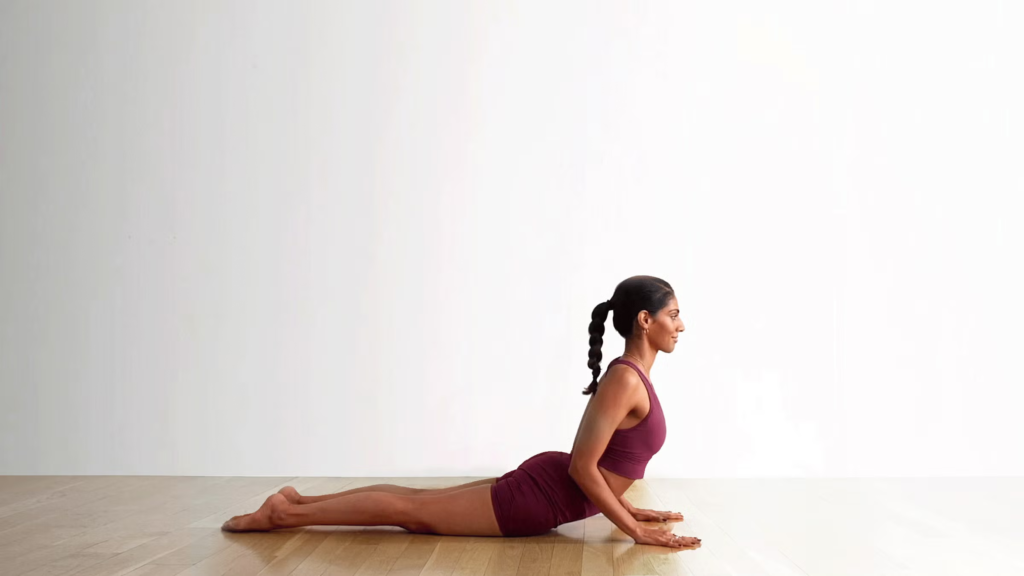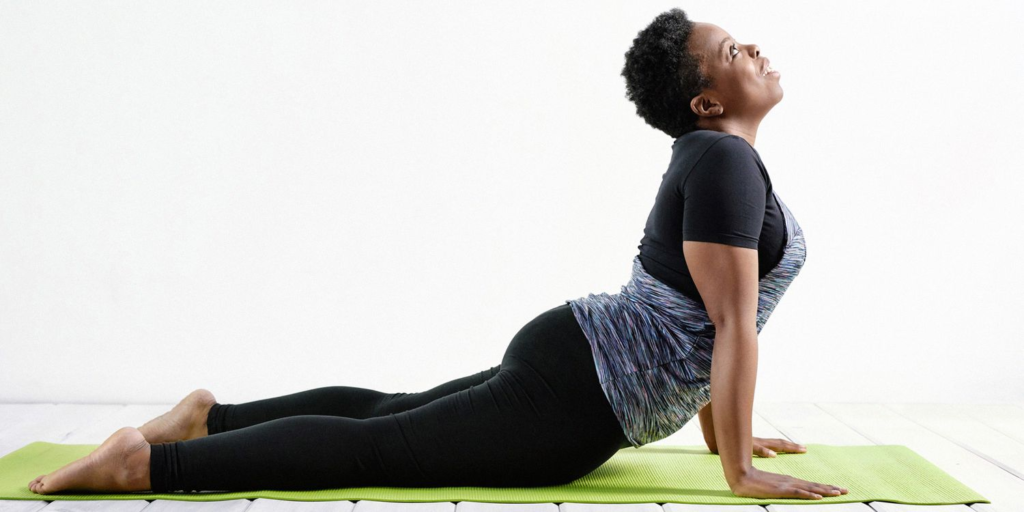Table of Contents
Introduction
Yoga for back pain is such a wide-reaching problem that it has millions of sufferers all over the world. Most of the time, it imposes many discomforts and puts immense constraints on daily activities. Lower back pain can significantly interfere with personal and professional life, whether it stems from prolonged sitting, poor posture, or direct physical strain. Thankfully, yoga’s holistic approach to alleviating this type of pain offers significant relief and promotes overall well-being. By incorporating specific yoga postures into everyday life, individuals can experience renewed flexibility, strength, and a more profound sense of personal and professional success.
Section 1: The Ailment at Hand—Lower Back Pain
Summary: Lower back pain can be attributed to various causes, including muscle strains, herniated disks, arthritis, and poor posture.
Understanding these causes is crucial for effective treatment of pain symptoms. Muscle strain often results from overuse or improper lifting techniques, while herniated disks occur when the soft inner material of a disk protrudes, irritating nearby nerves. Arthritis in the spine is a common cause of discomfort, particularly among older adults. According to the American Chiropractic Association, more than 31 million Americans experience low-back pain at any given time, and it ranks among the top causes of disability across the globe, affecting individuals of all ages. In fact, lower back pain was identified as the leading cause of disability worldwide in the Global Burden of Disease study, highlighting the urgent need for effective management strategies.
Conclusion: The impact of lower back pain can lead to significant suffering and discomfort in daily activities, ultimately restricting mobility. This pain can also result in decreased work efficiency, leading to absenteeism and, over time, potentially developing into long-term disability, which can further contribute to a myriad of mental health issues such as depression and anxiety. These interconnected challenges can severely impair one’s quality of life, making it essential to seek effective relief strategies.
Benefits of Yoga on Lower Back Pain
Yoga provides numerous benefits for those suffering from lower back pain, particularly through targeted stretching of the vertebrae and surrounding muscles. This gentle practice enhances flexibility and reduces muscle tension, promoting long-term relaxation. Unlike many traditional exercise forms, yoga poses offer modifications to accommodate practitioners of all levels, ensuring that everyone can benefit from its healing properties.
Flexibility and Strength Increased: Regular practice of yoga increases flexibility and strengthens the core muscles that support the lower back. Poses such as Downward-Facing Dog and Cobra Pose effectively target these areas, relieving pressure on the lumbar spine while enhancing overall flexibility.
Mental Well-being: The advantages of yoga extend beyond the physical realm, impacting mental health as well. Regular practice can alleviate tension, anxiety, and depression, which may contribute to chronic pain. Yoga introduces a balanced and positive mentality, incorporating mindfulness activities that foster body relaxation and reduce the body’s stress response through deep breathing techniques.
Section 3: Top Yoga Poses for Lower Back Pain Relief
Pose 1: Cat-Cow Stretch
Instructions: Begin in a hands-and-knees position, forming a Table Top. Inhale into Cow Pose, arching your back while lifting your head and tailbone. Exhale into Cat Pose by rounding your back and tucking your chin to your chest. Repeat for 10 breaths.
Benefits: This gentle transition between poses increases spinal flexibility and stretches the back muscles to promote relaxation. The rhythmic movement warms up the spine and releases tension in the lower back.

Pose 2: Child’s Pose
Instructions: Kneel on the floor and sit back on your heels. Lower your torso forward, extending your arms in front of you, and rest your forehead on the mat. Hold the stretch for 1-2 minutes.
Benefits: Child’s Pose offers a gentle stretch for the lower back and hips, allowing your body to relax and reduce stress. This pose lengthens the spine and alleviates tension in the lower back, making it an excellent resting position during yoga practice.

Pose 3: Downward-Facing Dog
Instructions: Start in a tabletop position. Engage your hips and lift them up and back, straightening your legs and arms to form an inverted V shape. Hold for 5-10 breaths.
Benefits: This pose provides a comprehensive stretch throughout the back, shoulders, and hamstrings, helping to release tension and improve flexibility. Downward-Facing Dog also builds core strength, which supports the lower back and enhances overall posture.
Pose 4: Cobra Pose
Instructions: Lie face down with your legs extended and the tops of your feet on the floor. Place your hands beneath your shoulders and lift your chest off the ground, keeping your arms straight. Hold your shoulders down and away from your ears. Maintain for 5 breaths.
Benefits: Cobra Pose strengthens the muscles of the lower back, chest, and shoulders while promoting better posture. This asana enhances spinal flexibility and stretches, addressing pain associated with poor posture habits.

Pose 5: Setu Bandhasana or Bridge Pose
Instructions: Lie on your back, bend your knees, and keep your feet flat on the ground. Lift your hips toward the ceiling while clasping your hands underneath your back for support. Hold for 5-10 breaths.
Benefits: This pose strengthens the glutes, hamstrings, and lower back muscles, stabilizing and supporting the spine. Additionally, it stretches the chest, neck, and spine, relieving lower back tension and encouraging relaxation.
Design of Yoga Program for Lower Back Pain
Daily Practice: Dedicating just 10-15 minutes each day to these yoga postures can lead to significant relief from lower back pain. Begin with this initial duration and gradually increase the time spent practicing. Remember, it is the frequency of practice that brings about long-lasting results rather than the duration of each session.
Consistency: The key to achieving lasting alleviation of lower back pain lies in maintaining a consistent practice. Aim for at least 3 to 4 sessions per week. Even a brief daily commitment can yield tremendous benefits over time. Carving out time in your daily schedule for yoga can help establish this important practice.
Tips: Incorporate yoga into your morning routine to energize your day or use it as a calming ritual in the evening. Many yoga poses can be practiced with just a comfortable mat and loose clothing. Consider enhancing your experience with soothing music and essential oils to create a tranquil atmosphere conducive to relaxation following your yoga session.
Personal and Professional Success through Yoga
Higher Productivity: Alleviating lower back pain through yoga can significantly enhance productivity in the workplace. When individuals are free from the distraction of pain, they can focus fully on their tasks. Improved posture and reduced discomfort lead to increased confidence, resulting in better performance in professional settings.
More Focused: Yoga cultivates a clearer mind. The mindfulness inherent in yoga practice encourages individuals to stay present, leading to enhanced well-being and performance in all areas of life. With regular practice, one can better manage time and reduce procrastination.
Work-Life Balance: Committing to a consistent yoga practice fosters a healthier work-life balance. The benefits of yoga extend to stress management, physical health improvement, and cultivating a positive mindset. Practicing yoga regularly enables individuals to lead balanced and harmonious lives, both personally and professionally.
Real-Life Success Stories
Testimonials: Numerous individuals have reported significant relief from lower back pain through regular yoga practice. For example, Sarah, an office worker, struggled with chronic lower back pain that became unbearable by the age of 34. After implementing a daily yoga routine, she found relief and experienced a marked increase in her productivity at work.
John, a 45-year-old construction worker, had a long history of lower back pain due to the physically demanding nature of his job. By integrating yoga into his fitness regimen, he learned to engage his core effectively, alleviating the discomfort that had previously hindered his work performance.
Quotes: “Yoga is among the most potent non-pharmacological treatments for lower back pain,” states Dr. John, a respected chiropractor. “It addresses not only the physical aspects of pain but also the mental and emotional factors that contribute to discomfort.” Lisa adds, “Yoga embodies a holistic approach: it teaches individuals how to understand, manage, and ultimately heal their pain from within through regular practice.”
Common Misconceptions About Yoga and Lower Back Pain
Myth No. 1: Yoga is Too Tough for Beginners. Many people assume they cannot practice yoga due to a belief that it requires extreme flexibility and strength. While some poses may seem challenging, all yoga postures have modifications available, making them accessible to practitioners at any level. Beginners are encouraged to start with simpler variations and gradually progress as they build strength, flexibility, and balance.
Misconception 2: Yoga Will Only Make Your Back Pain Worse. Some individuals worry that certain yoga poses might exacerbate their back pain. While improper form or overexertion can lead to injury, practicing yoga with care and guidance can be done safely. Focus on gentle, restorative postures designed to alleviate lower back pain, and consult with a healthcare provider or certified yoga instructor before starting a new practice, especially if you have pre-existing conditions.
Common Misconception 3: Yoga is Only for Physical Gains. While yoga does involve physical movement, it also offers significant mental and emotional benefits. The practice is known to reduce stress, anxiety, and depression—all common underlying factors contributing to chronic pain. Emphasizing the holistic nature of yoga, it is essential to incorporate mindfulness and meditation practices as integral components of a balanced lifestyle.
Making Yoga Your Lifestyle
Identify and Set Goals: Establish clear and achievable goals for your yoga practice, whether that involves becoming pain-free or enhancing mental well-being. Prioritizing these targets will help keep you motivated and engaged in your practice.
Make it a Habit: The benefits of yoga largely depend on consistency. Create a routine where you practice at the same time each day, whether in the morning to energize yourself or in the evening to unwind and reflect on your day. By integrating yoga into your daily life, you can cultivate a lasting commitment to your health and well-being.
if you suffering from back pain and need a yoga online class don’t hesitate to contact to professional from painsolver take your appointment now only on PAINASOLVER
